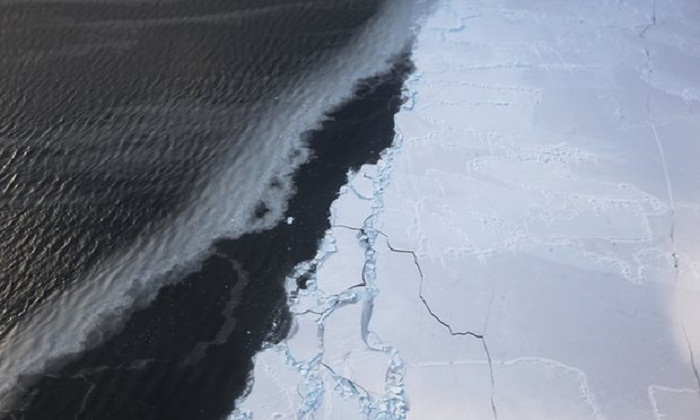That's the difference between 0.86 and 1.29 inches per decade - and the researchers suggest further sea level acceleration could be in store.
The chief cause of the acceleration was the melting of the Greenland ice sheet, which went from contributing less than 5 percent of all sea level rise in 1993 to contributing more than 25 percent in 2014, the study found. The loss of ice in Antarctica and smaller glaciers over the same time period also contributed to quicker sea level rise.
The increase in the rate of sea level rise "highlights the importance and urgency of mitigating climate change and formulating coastal adaptation plans to mitigate the impacts of ongoing sea level rise," write Xianyao Chen of the Ocean University of China and Qingdao National Laboratory of Marine Science and Technology, and colleagues. Chen's co-authors hailed from institutions in China, Australia and the United States.
"We understand why the sea level is accelerating and we're understanding what the components are contributing," said Christopher Harig, one of the study's authors and a researcher at the University of Arizona.
Earlier this year, a different group of researchers found sea level rise was only about 1.1 millimetres per year before 1990, whereas in the period between 1993 through 2012 it was 3.1 millimetres per year. NASA, at present, puts the rate of sea level rise at 3.4 millimetres per year.
But while the individual estimates differ, the broader picture is that researchers generally agree that the rate of sea level rise is increasing - and that this will have major consequences for coastal regions, which will have less time to adapt if sea level rise acceleration continues.
"I think it's gotten to the point where the observation is pretty robust," said Harig.
In the latest paper, researchers both reexamined the recent satellite record to derive a clearer picture of sea level rise acceleration, and also considered each of the individual components of sea level rise, which make up the so-called sea level "budget." They then found that the different parts of the budget matched up well with measurements of sea level change taken by satellite altimeters over the past two decades.
"We've known the bottom line total sea level change over the last couple decades, and we've known the individual components on a year-by-year basis," said Bob Kopp, a Rutgers University sea level expert who was not involved in the study but is familiar with the work.
"We've known the two match up pretty well. The authors show that, when you look a bit more sharply at the year-to-year total, it's quite close to the total of the individual components. The sums work, not just on average but in each year. This increases confidence in the overall result."
The key components of sea level rise in this equation include thermal expansion of ocean water as it heats up - previously the dominant component but, as the study notes, not any more - and the melting of Greenland, Antarctica and smaller glaciers distributed across the globe.
Finally, there is terrestrial water storage or loss if, due to rainfall or other factors, the continents end up storing more water on their surfaces, or alternatively, lose it to the ocean.
The new study finds that losses of ice, and from Greenland in particular, are now becoming a bigger contributor to sea level rise than thermal expansion.
And it notes rather pointedly that this contrasts with what the United Nations' Intergovernmental Panel on Climate Change, the top authority on climate science, predicted would unfold across the course of the century in 2013.
The more Greenland and Antarctica contribute to sea level rise, the higher it can go, since these are the two largest sources of land-based ice on the planet.
For coastal communities, Harig said, the significance of the paper is that there's no way to avoid the reality that sea level rise acceleration, which was already expected to occur based on scientific projections, is now here.
"It's no longer a projection, it's now an observation," he said. "It's not something that they can continue to put off into the future."
More about: #SeaLevel
















































